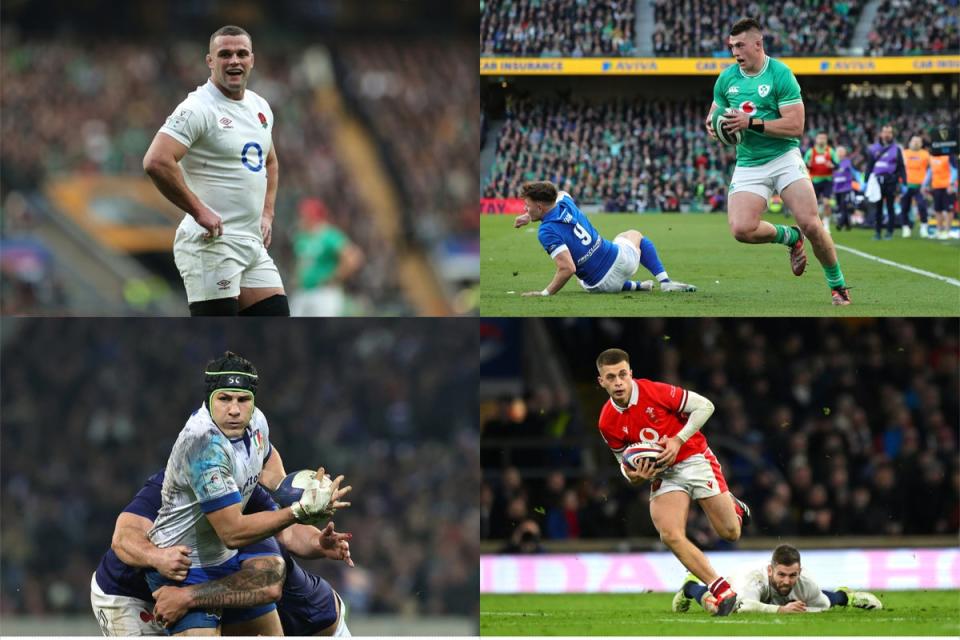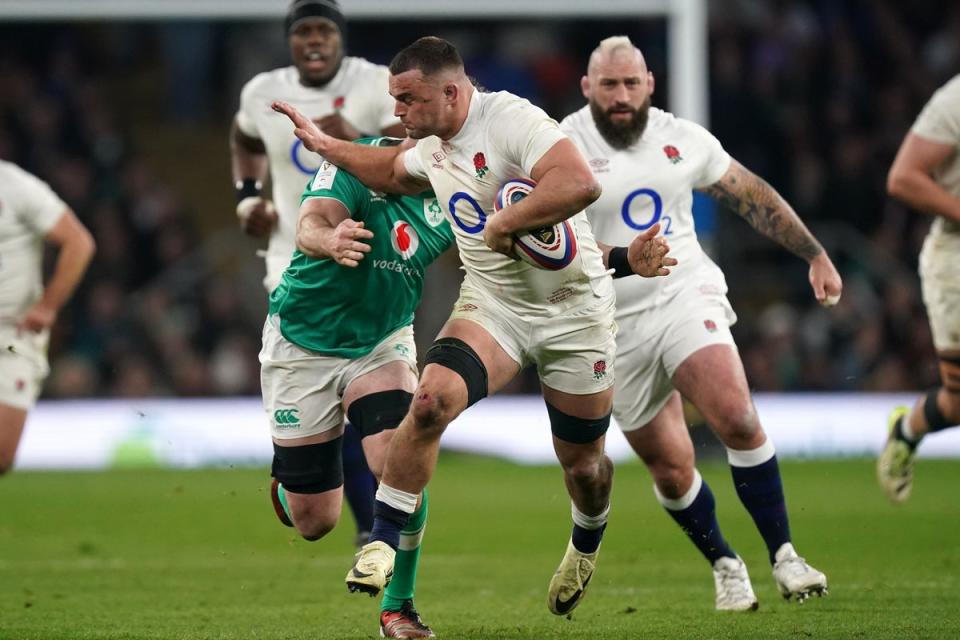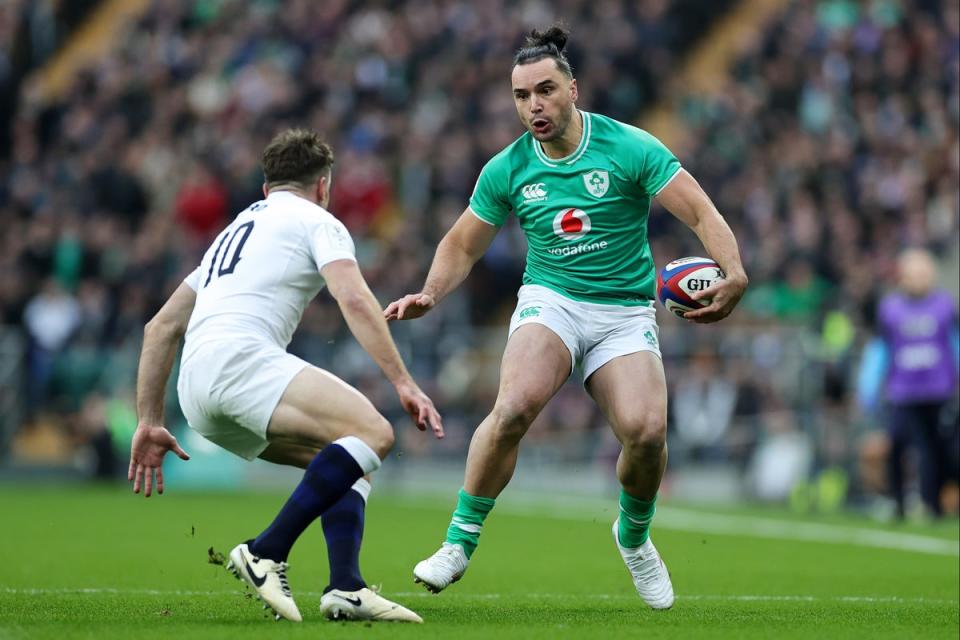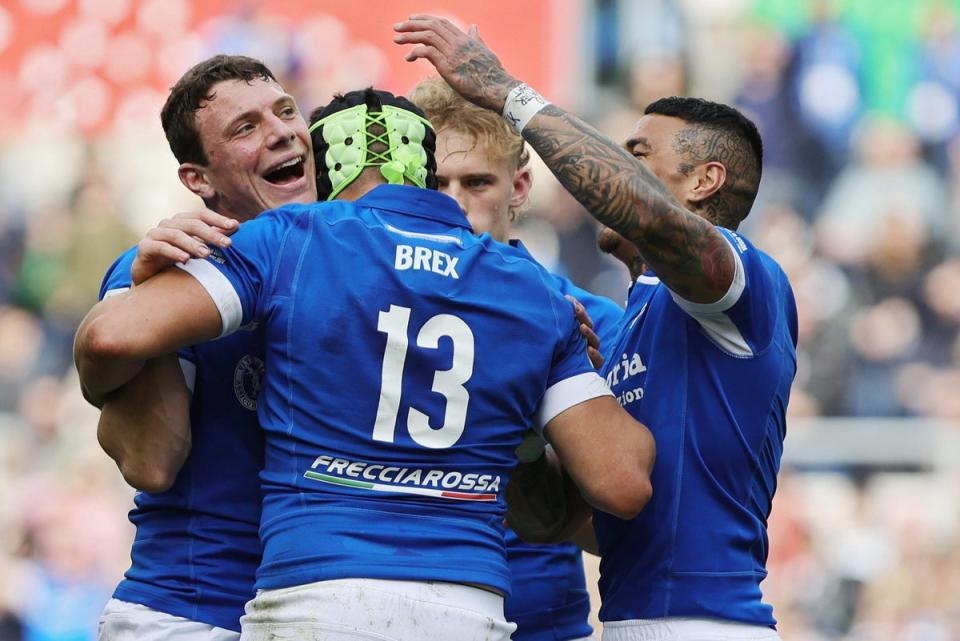Six Nations team of the tournament: Ireland dominate after securing back-to-back crowns

A thrilling Six Nations is at an end with Ireland champions again after a tense final weekend win over Scotland.
Andy Farrell’s side may not have secured back-to-back grand slams but were, again, too good for the rest, setting the tone with an opening night victory over France and retaining their crown.
Their hopes of another clean sweep were derailed by England, who took great strides in this tournament, while France will also be pleased with their progress in the final two rounds after a rough start to the championship.
But perhaps the side happiest with their campaign will be Italy, securing two wins and a draw to comfortably avoid the wooden spoon, condemning Wales to a bottom-placed finish with victory in Cardiff on Super Saturday.
Which players stood out across the five rounds? Here, The Independent’s rugby writers select our Six Nations team of the tournament:
Loosehead prop: Pierre Schoeman (Scotland)
The sole Scot in our selection, Schoeman is rock solid in just about every facet. He may lack the sheer dynamism of some other looseheads but he is a really good frontline carrier with the ability to shift at the line, while his jackal work is sometimes overlooked.
Hooker: Dan Sheehan (Ireland)
It seems impossible to stop Sheehan from impacting on a contest. His ability to scorch even backs in wide channels catches the eye but he has the nuts and bolts needed of a top-class hooker, too.
Tighthead prop: Uini Atonio (France)

And to think that Atonio had hoped to retire ahead of this campaign. Persuaded back by Fabien Galthie, the hulking prop was better than ever, providing plenty of punch as a carrier alongside his destructive set piece work.
Lock: Maro Itoje (England)
Joe McCarthy faded after a strong start, while George Martin might have been in had he been fit for round one, but Itoje’s output was outstanding across England’s campaign. He may not always flash like some of his teammates but the lock does so much of the unseen work needed to make a side click, and has become a fine lineout caller, too.
Lock: Tadhg Beirne (Ireland)
In an Irish side of big performers, it is notable how often it is that Beirne comes up with a timely turnover or crucial pass – there’s very little the lock can’t do on a rugby pitch.
Blindside flanker: Francois Cros (France)
Far from a vintage Six Nations for the blindside flankers of the tournament, with Ollie Chessum good after a shift into the back row and Andy Christie a developing force but neither having featured heavily enough for inclusion. Cros, though, is the glue guy of the French side, keeping his involvement up even through their early-round struggles.
Openside flanker: Michele Lamaro (Italy)
Captain fantastic in a stellar championship for Italy, Lamaro returned to his teak-tough tackling ways and showed development as an attacking force, too. Gonzalo Quesada has something good cooking, with his captain’s composure a key ingredient. Josh van der Flier and Tommy Reffell ran him close.
Number eight: Ben Earl (England)

Earl had drawn a bit of flak pre-tournament by suggesting that he wanted to be bracketed as one of the best in the world before the year was out, but he’s rapidly bursting into the conversation.
Scrum-half: Jamison Gibson-Park (Ireland)
The metronome setting Ireland’s lively tempo, Gibson-Park enjoyed an excellent tournament. His speed of pass and thought at the base of the ruck is an underrated element of Ireland’s play, keeping a defensive line on the back foot with quick, efficient transfers into the next phase.
Fly-half: Jack Crowley (Ireland)
It wasn’t always perfect but Ireland appear to have found Johnny Sexton’s successor. Crowley handled the weight of the occasion superbly on the opening night in Marseille to set Ireland on their title course.
Left wing: James Lowe (Ireland)

A sublime finisher, Lowe remains vital for Ireland, with his cannon of a left boot such a valuable clearing option. Duhan van der Merwe wasn’t far away after a match-winning Calcutta Cup hat-trick, but the Scotland wing blew hot and cold.
Inside centre: Bundee Aki (Ireland)
The best player in the world since the start of the World Cup? Aki picked up where he left off in France and looks more explosive than ever both through and away from contact. His efforts in defence don’t always get a mention but he and Robbie Henshaw combined nicely, while the Connacht centre chipped in with a couple of breakdown snaffles, too. He had to hit top level to make this side due to a coming of age tournament for Tommaso Menoncello, whose potential is extraordinary.
Outside centre: Juan Ignacio Brex (Italy)

The pivot man in Italy’s phase attack, Brex has long been a key cog for Italy but took his game to another level in this tournament. There is no centre who times their pull-back passes better while still offering real carrying thrust, and some tweaks to the defensive system have allowed him to be more effective than in the past when Brex was often left exposed shooting out of the line leading Italy’s line speed.
Right wing: Damian Penaud (France)
Mad as a box of frogs on the run but it somehow always seems to work for Penaud, closing in on Serge Blanco’s try record and a worthy successor to the flying Frenchman. He cut Wales and England to ribbons on the final two weekends.
Full-back: Cameron Winnett (Wales)
A tough tournament for Wales nonetheless left some green shoots of encouragement. The real find was Winnett, who allayed fears he may lack the X-factor required of a Test full-back by doing everything well. He, like many, will bid to banish the performance against Italy to the deep recesses of his memory bank but in a championship where no other 15 started all five games, Winnett is a worthy wearer of this jersey.
